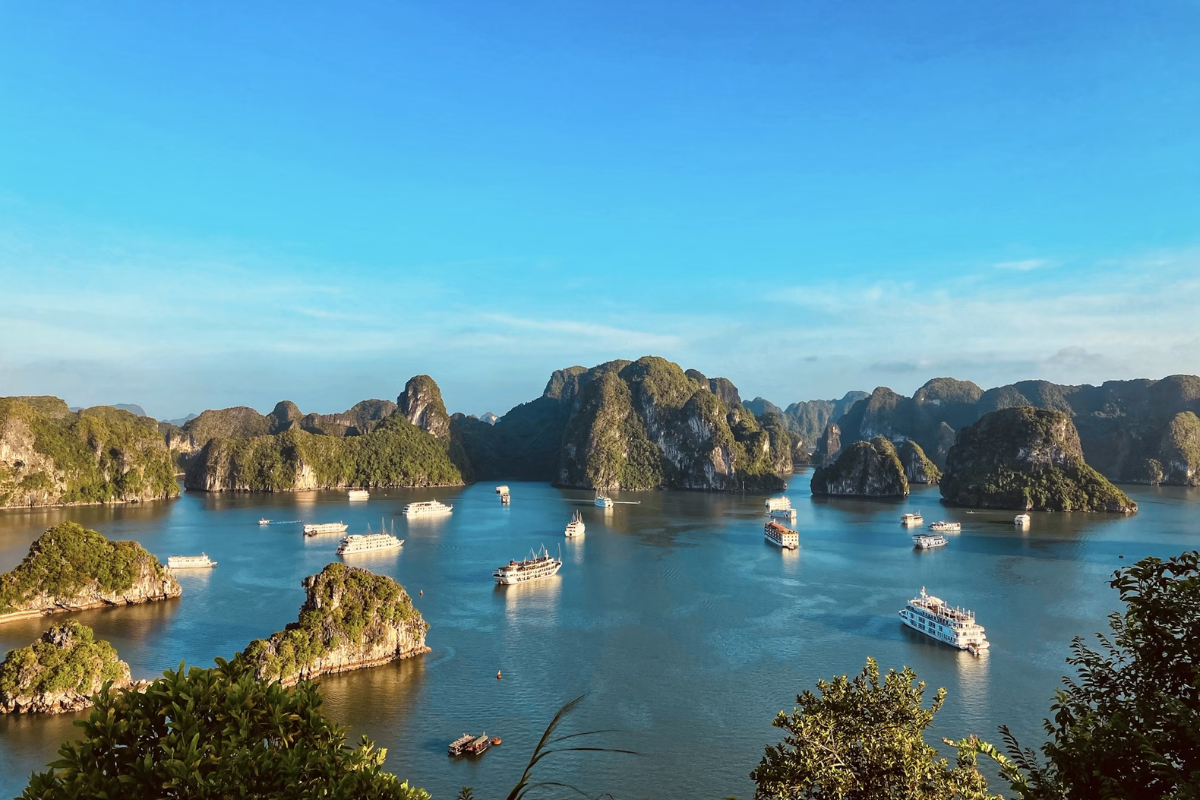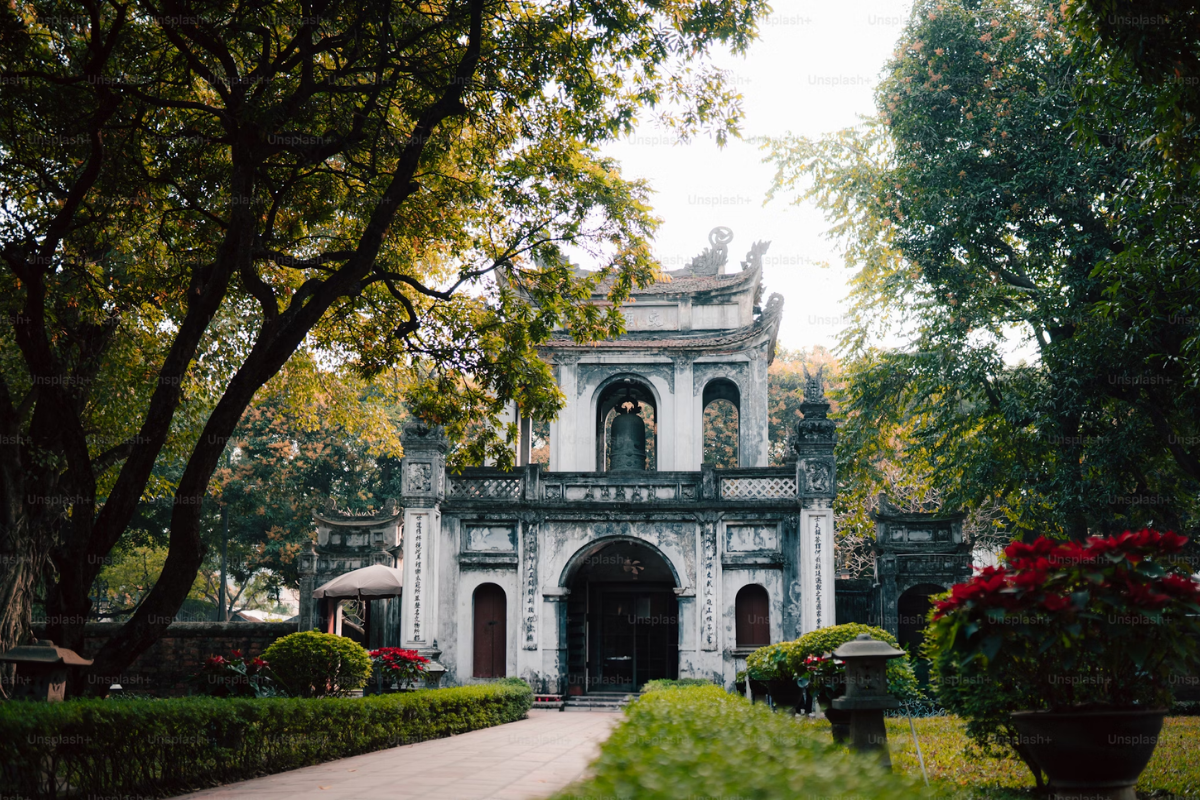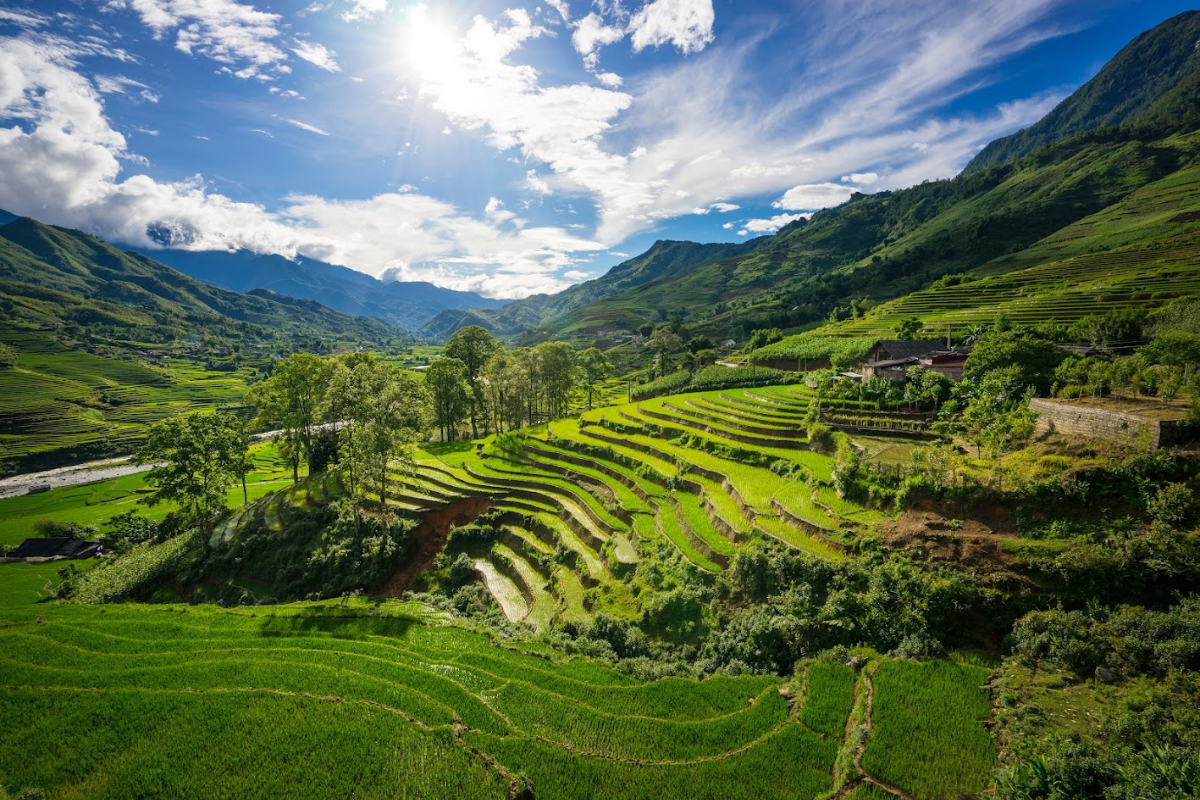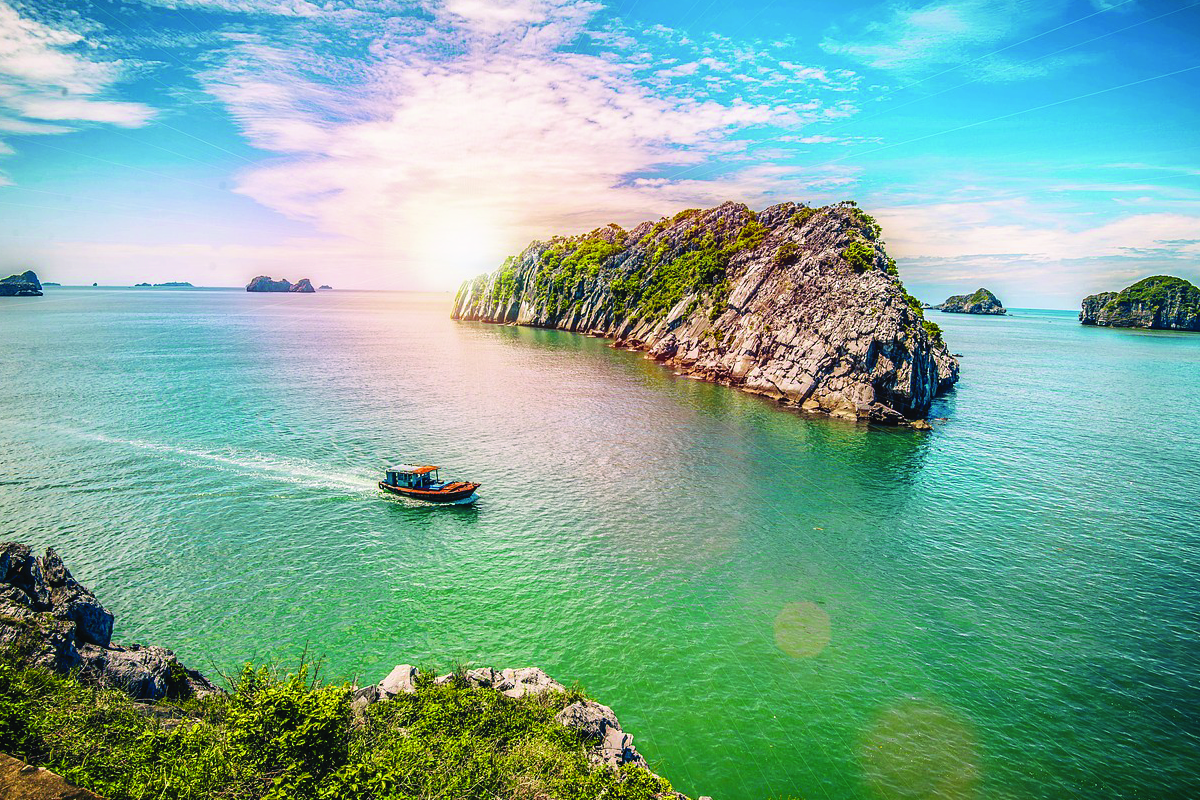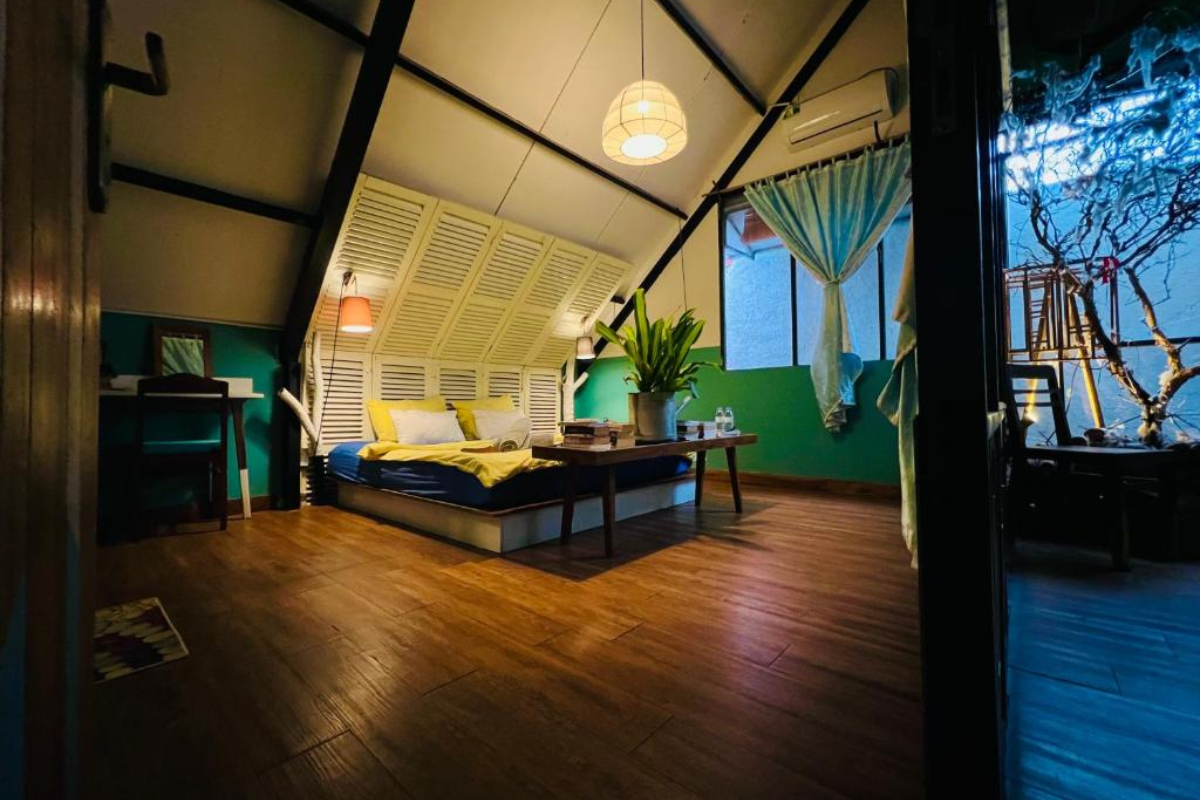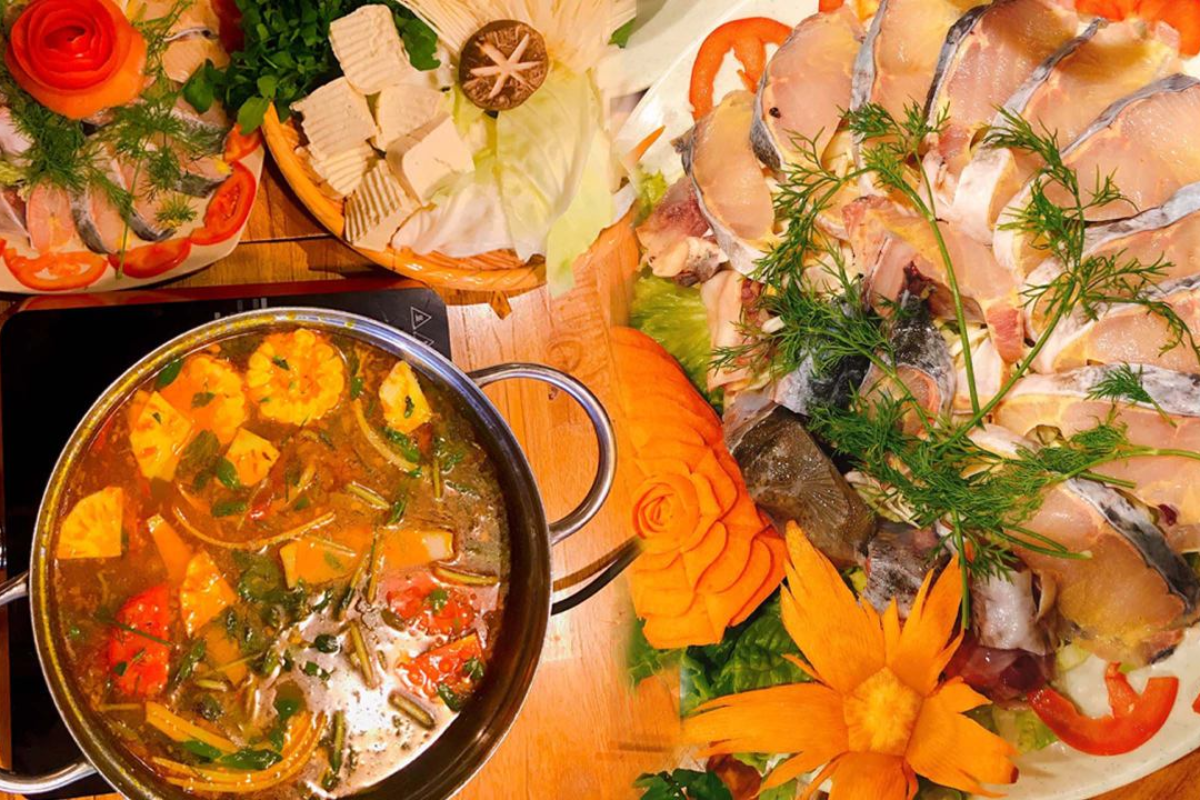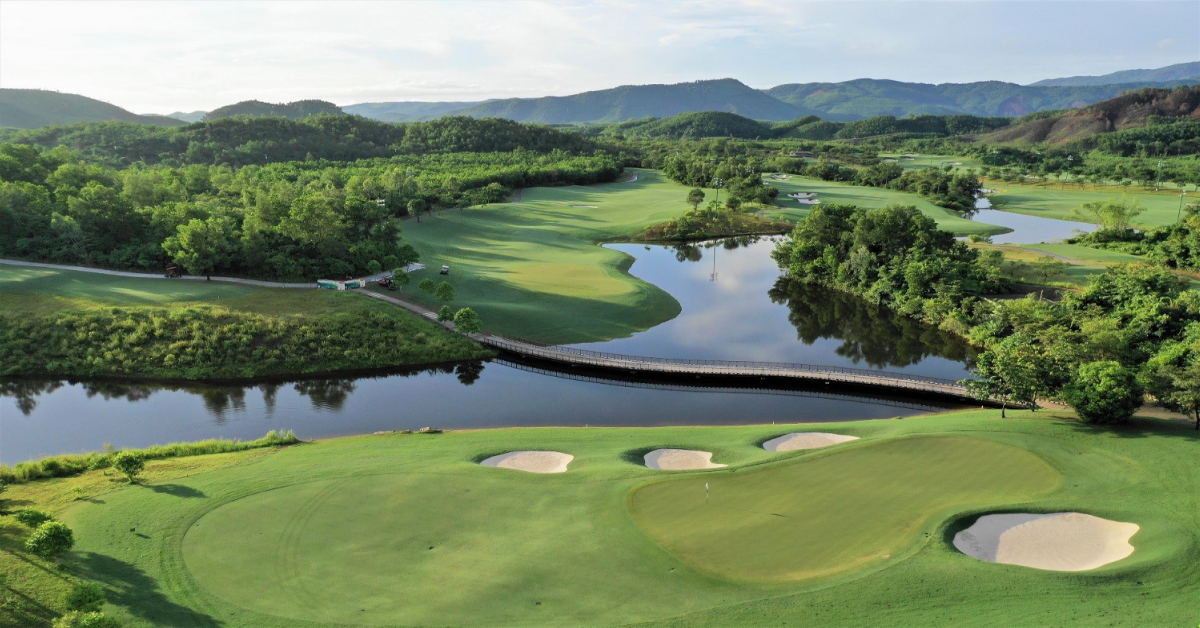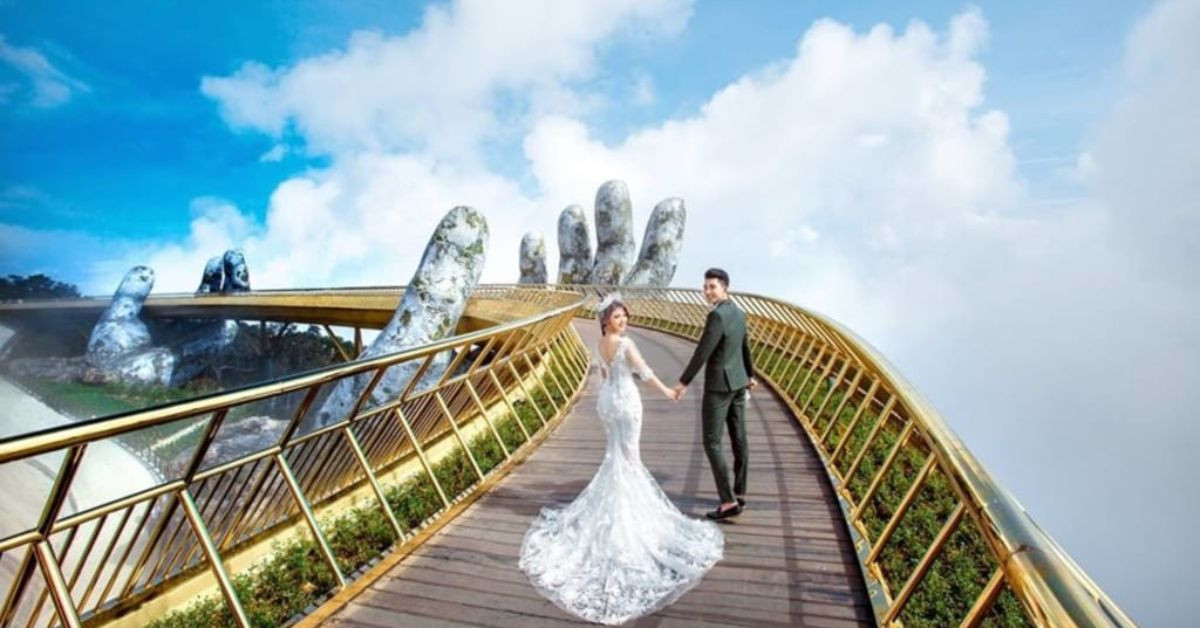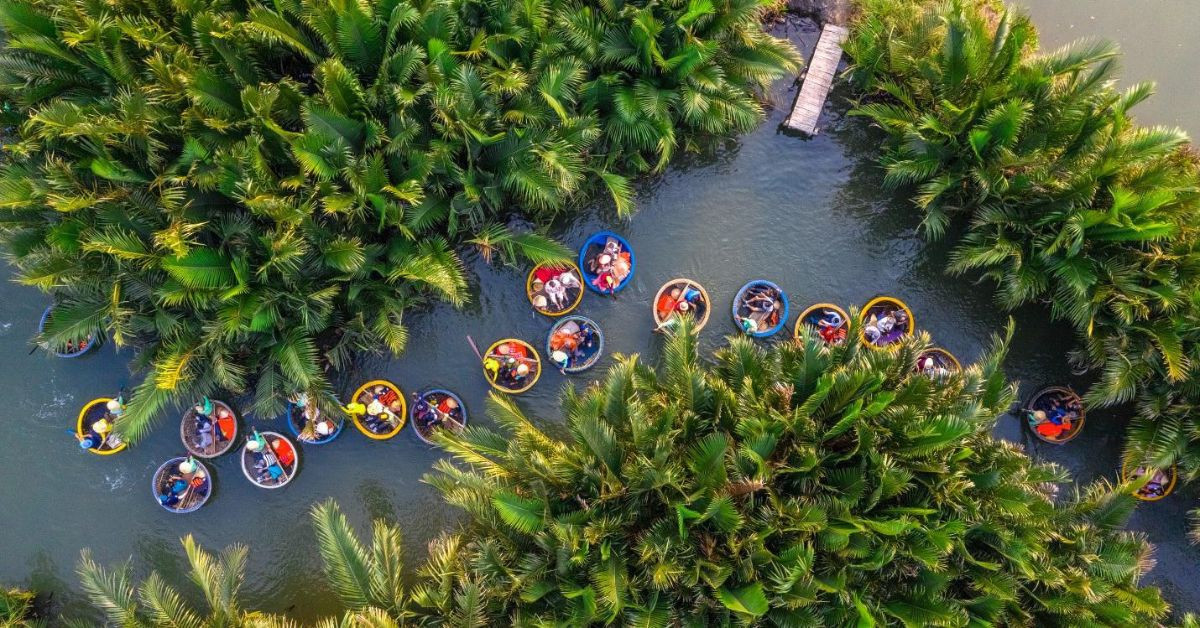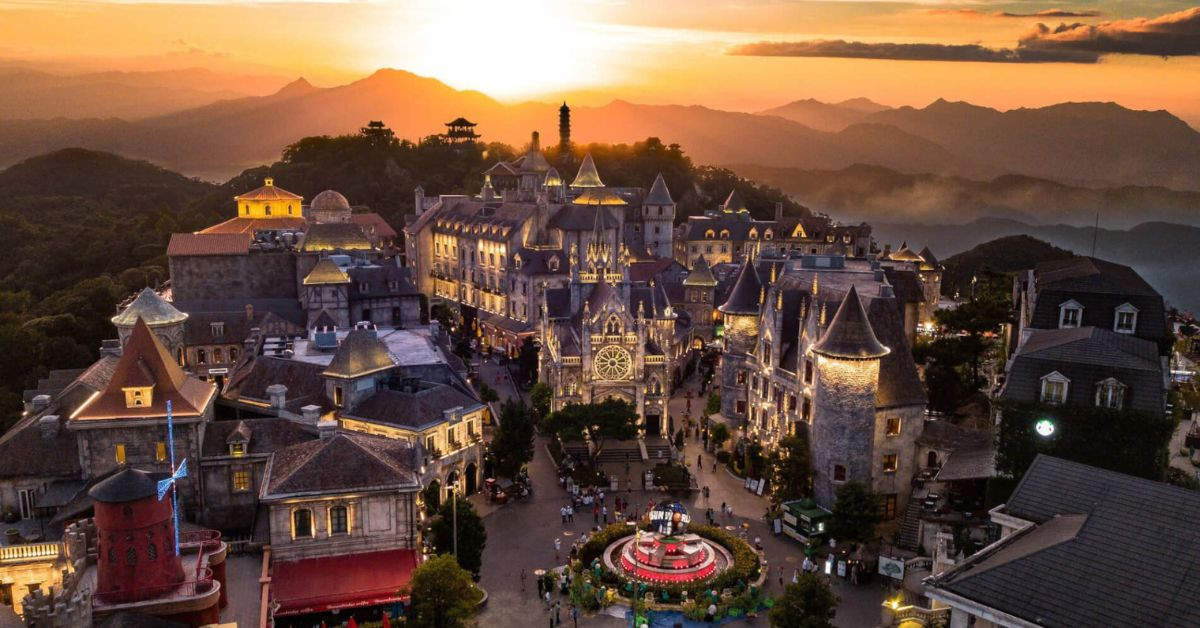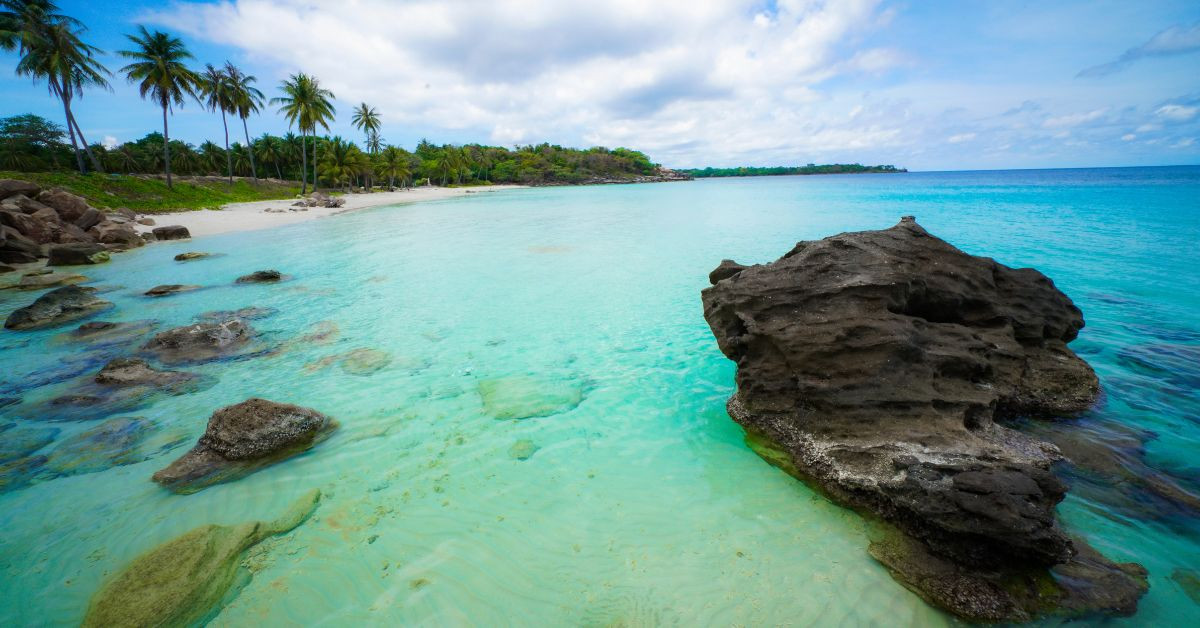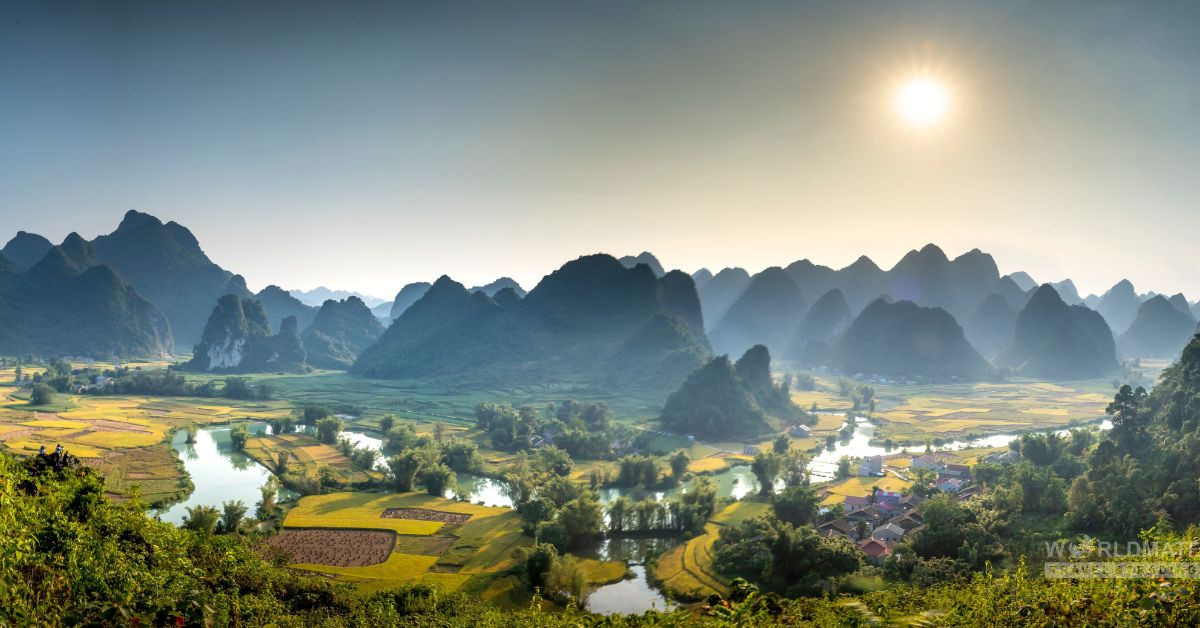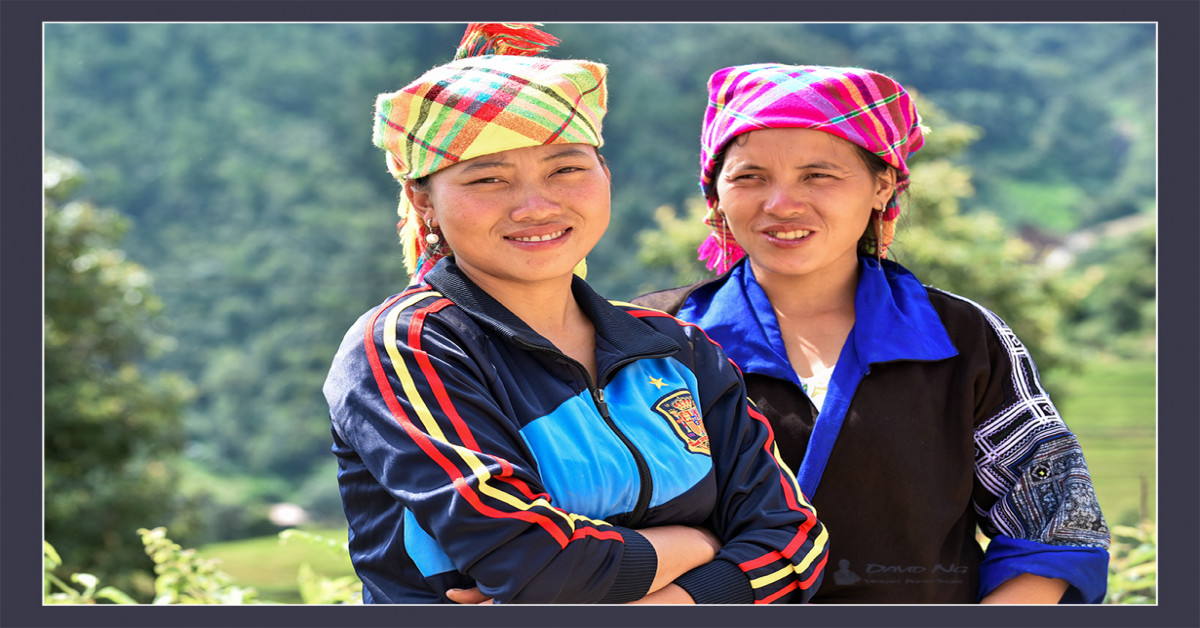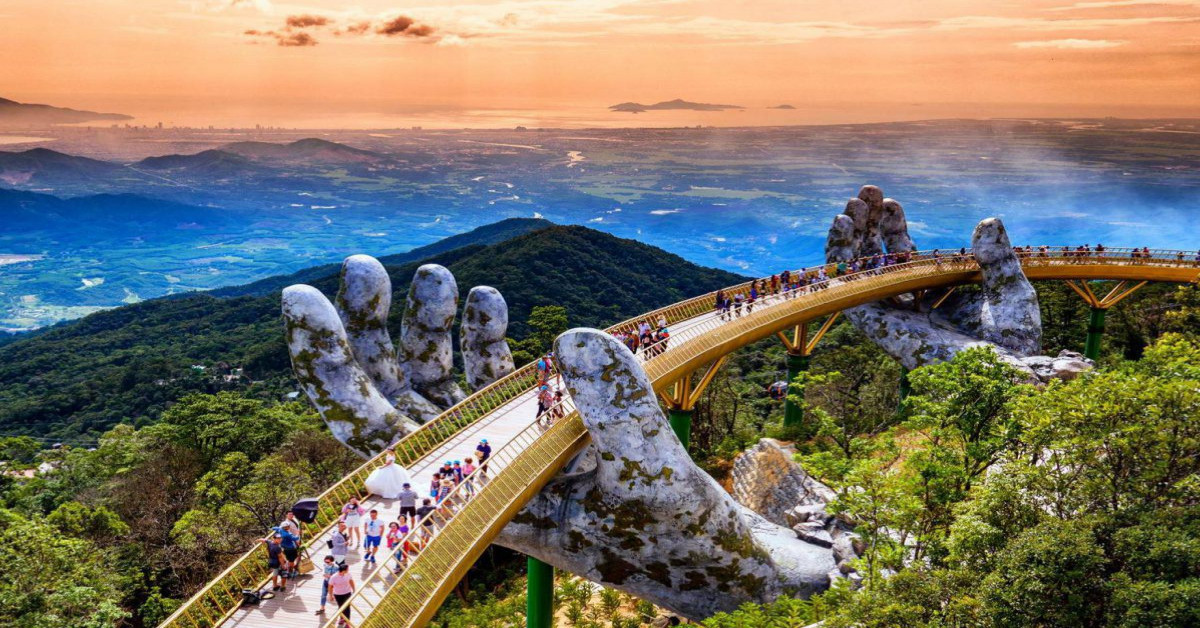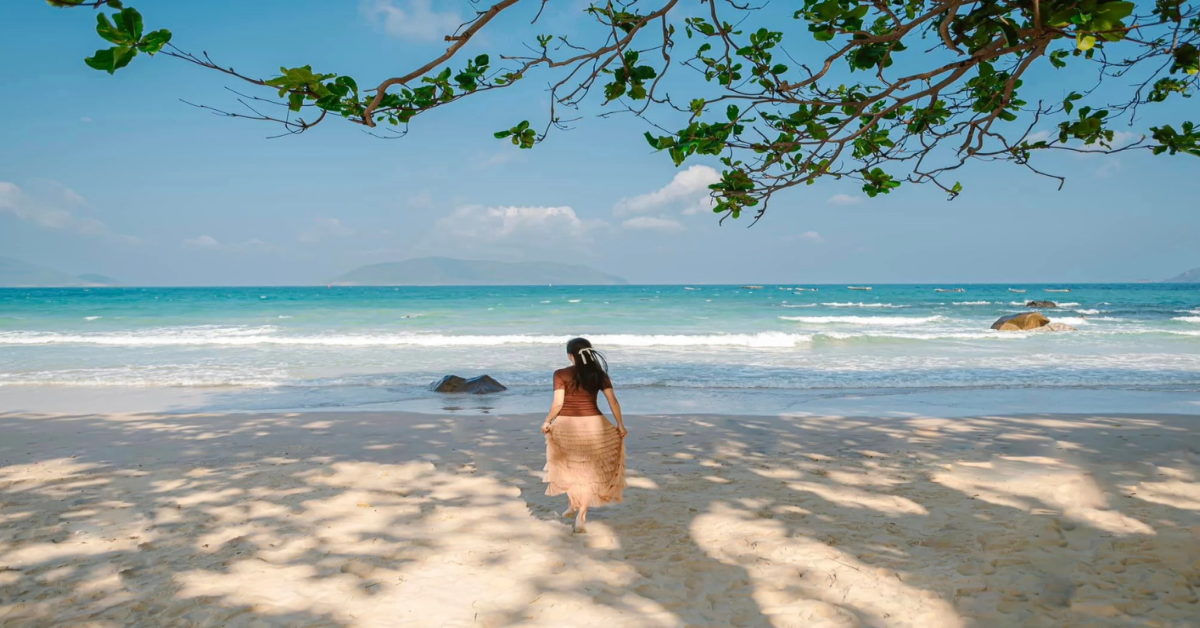13 Must-See Attractions & Activities in Hue
The ancient city of Hue was the country’s capital during the mid-1700s and then again for over a century starting in the early 1800s. The bloodiest battle of the Vietnam War was fought in Hue, and the city’s ancient monuments, including the 19th-century Imperial City complex, were severely damaged. Today, visiting this historic attraction is one of the top things to do in Hue.
Hue sits on the banks of the Perfume River, named because local orchards shed their flowers into the river during spring, causing the water to smell like perfume. The river is an essential part of Hue’s history and heritage, as well as its modern life.
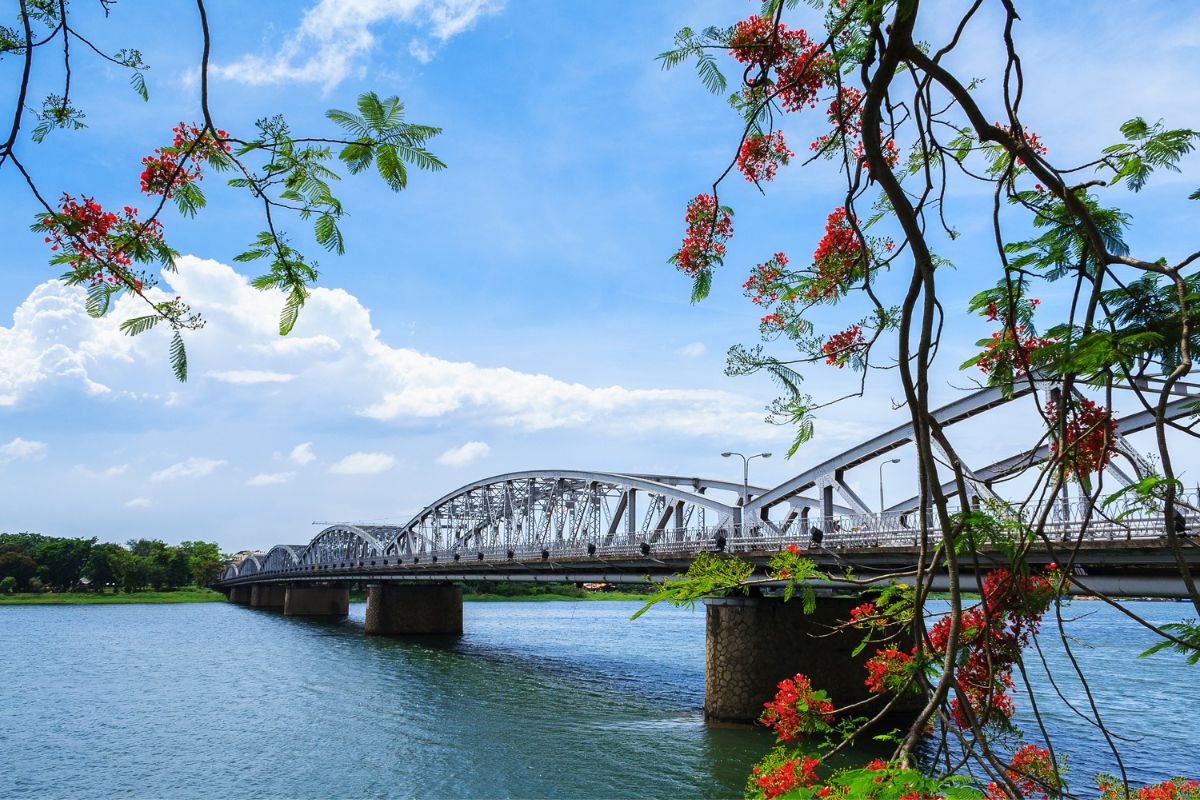
The Trang Tien Bridge is a popular background for nighttime photos when it’s fully illuminated, and the waterfront offers plenty of activities, including cafés and restaurants for those out on an afternoon stroll. Most of Hue’s main tourist attractions are set against or within minutes of the river.
Hue is home to many sites worth visiting, including emperors’ tombs, several pagodas such as the famous Thien Mu Pagoda, and French-colonial buildings along the river. For more ideas on the best places to visit in this ancient capital, take a look at our list of attractions and things to do in Hue.
1. Imperial City Hue
.jpg-image-kmyvorid.jpg)
A UNESCO World Heritage site of bright reds and yellows, the Imperial City is Hue’s most important attraction and the first stop in your discovery of the city.
A walled area inside the historical citadel of Hue, the Imperial City was once the capital of Vietnam. In 1804, Emperor Gia Long consulted geomancers to decide on the most auspicious location for the 10-kilometer-long walled citadel, which was eventually placed southeast to face the Perfume River.
The grounds of the Imperial City are surrounded by towering walls and a moat and include temples, gardens, palaces, and residences. However, of the original 160 large buildings that dotted the grounds of the city, only 10 survived Vietnam War bombings.
Many of the buildings that still stand are now empty and can be explored freely by visitors, but some have been restored (or are under restoration), including halls, city gates, and shrines.
2. Thai Hoa Palace
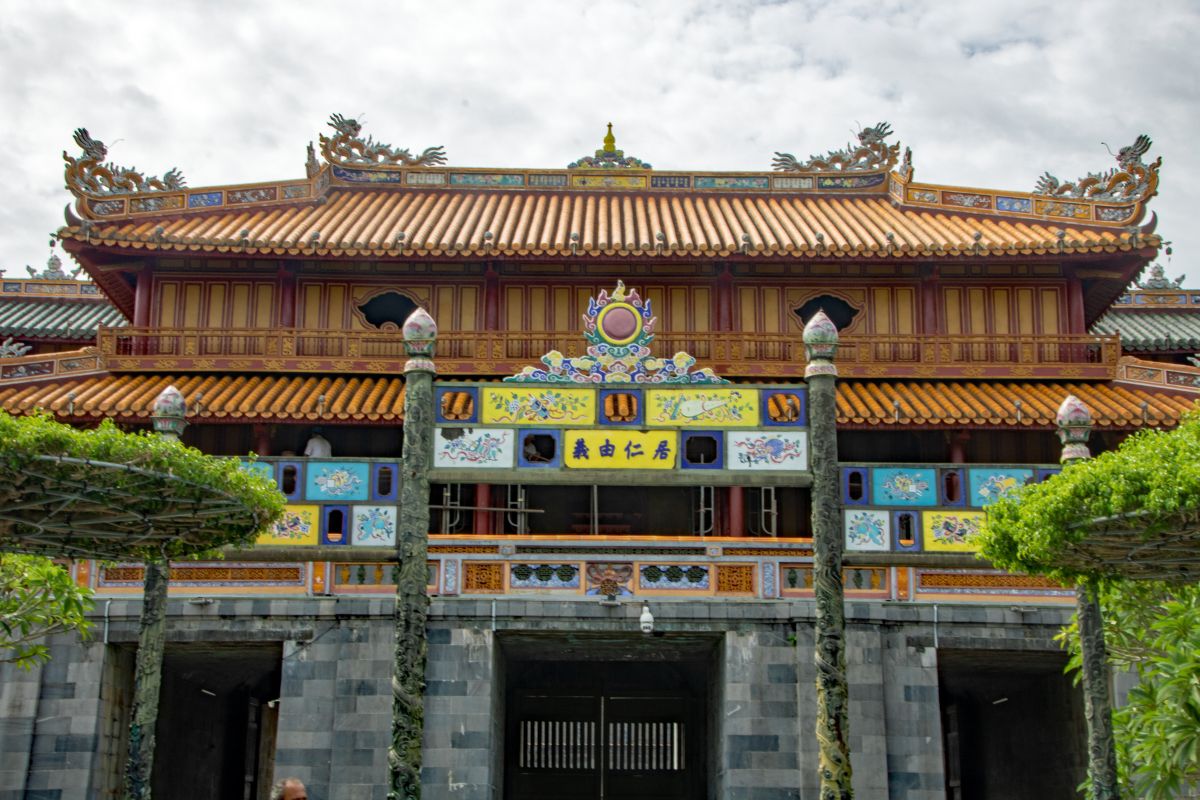
Perhaps the most important construction of the Nguyen dynasty—the last dynasty in Vietnam—the design of this palace is meant to represent a deep yin/yang balance, where both the physical and the spiritual are in perfect harmony.
Although the palace survived the Vietnam War bombings, extensive repairs had to be done to the interior to restore the damage caused during the battle of Hue.
The Thai Hoa Palace sits at the heart of the Hue Citadel, right after crossing the Ngo Mon Gate. A lotus lake and a long courtyard walkway provide an impressive welcome to the palace.
The main room of the palace is a large hall with a timber roof and 80 timber columns. Originally meant for royal ceremonies and events, it was also the crowning place for Emperor Gia Long and the area where he received visitors—both during official business meetings and when the doors were, on rare occasions, open to the public. A covered golden throne sits in the center of the hall.
3. Thien Mu Pagoda
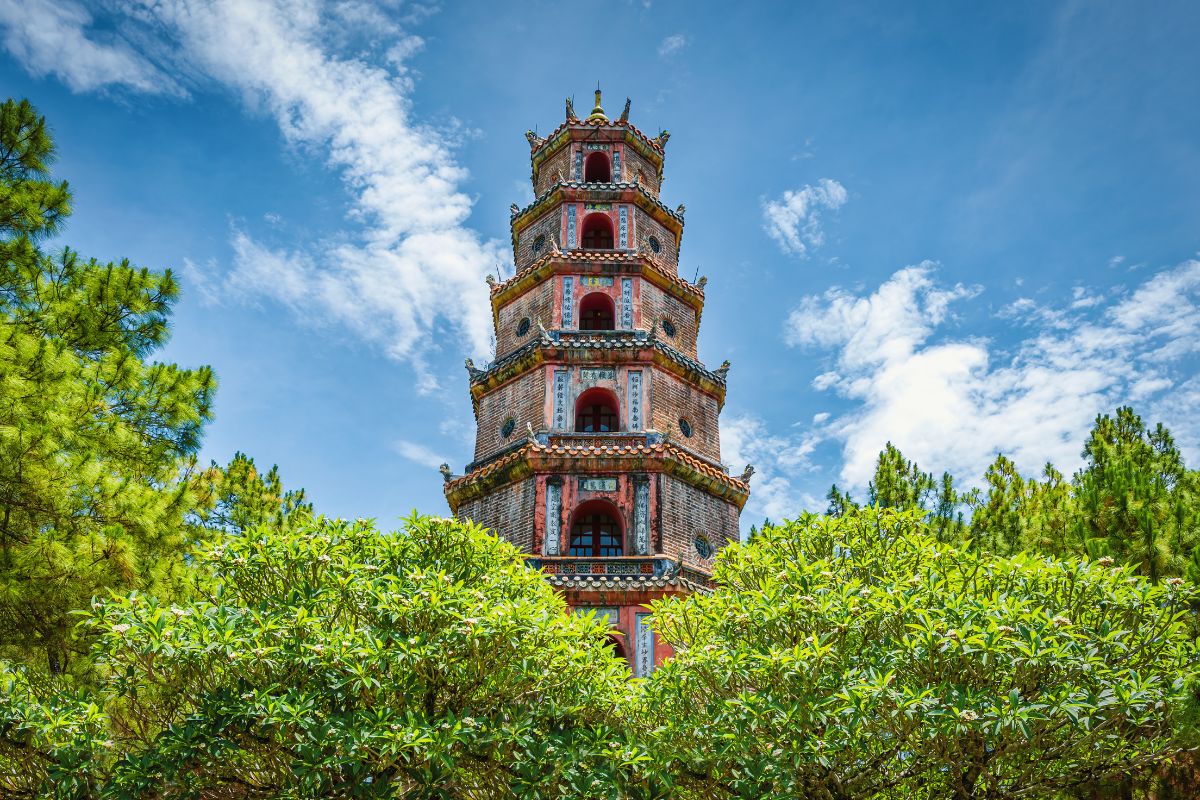
Also known as the Pagoda of the Celestial Lady, this seven-story pagoda is one of the most recognizable symbols of Hue. It was built in 1601 by Lord Nguyen Hoàng, inspired by a local legend.
According to the legend, an old lady dressed in blues, greens, and reds foretold that a pagoda would be built in that place and people would come to pray for Vietnam’s prosperity.
Over the next two centuries, the temple was expanded, and special details and buildings were added, including a massive bell that can be heard 10 kilometers away, additional praying halls, towers for storing sacred texts, and meditation halls.
Beautiful gardens, including a bonsai garden, are set around the buildings—many of them hidden from view until you explore the various paths.
Parked under an open space, you’ll also find a car used during the Diem Regime protests. In a fight for religious freedom, Quang Duc, a monk from Hue, drove to Saigon, parked this car, and then set himself on fire. The story of his life and self-immolation is told through words and pictures posted at this temple.
4. Royal Tomb of Emperor Khai Dinh
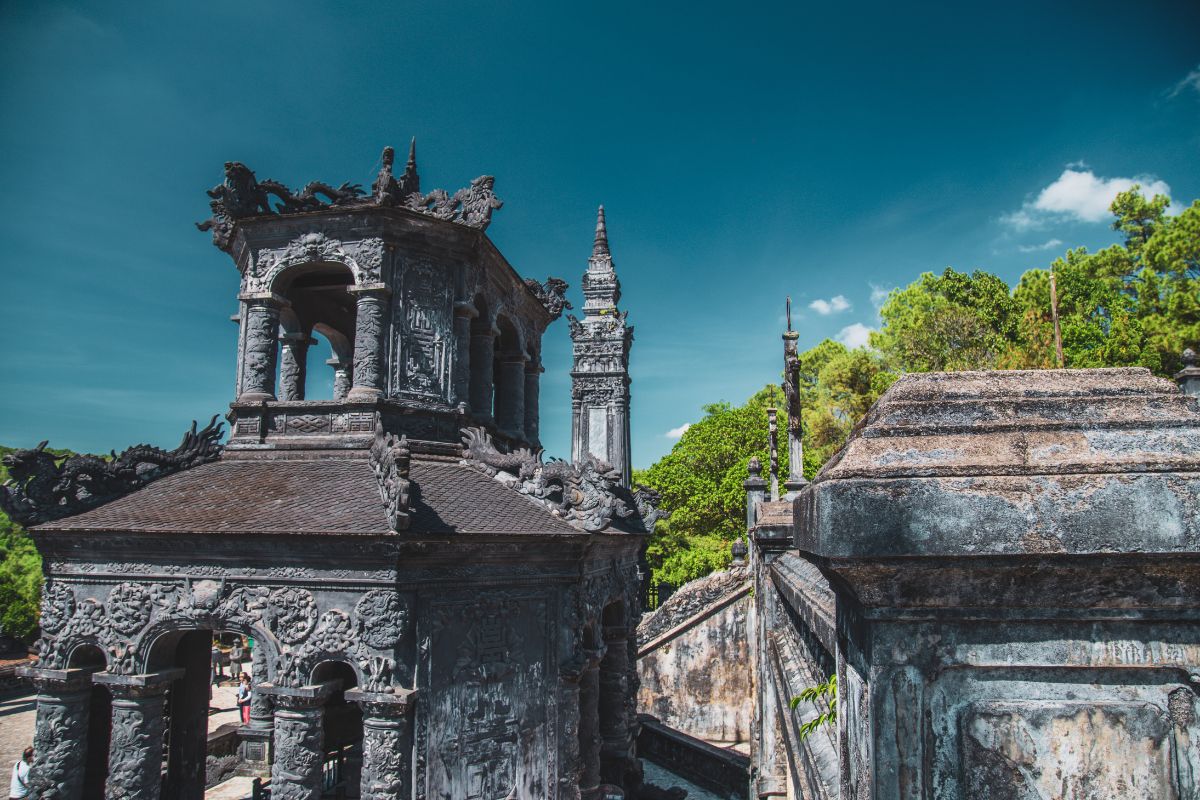
Located just outside Hue, on the steep Chau Chu mountain, this tomb was built for the twelfth Emperor of the Nguyen dynasty, who died in 1925.
Emperor Khai Dinh was highly disliked by his people, as he sympathized with French colonizers and ordered many nationalist leaders to be arrested. He also forced a change to a Romanized Vietnamese alphabet in 1918, resulting in the abandonment of the original local language (a mix of Chinese and Sino-Vietnamese); almost no one alive today can read the original old Vietnamese language.
Emperor Khai Dinh’s tomb is one of the most imposing tombs ever designed in Vietnam, perhaps because he oversaw the construction himself with funds raised by increasing taxes by 30 percent. The result is an elaborate construction that mixes Eastern and Western details.
The tomb is flanked by two giant dragon sculptures and features an imperial audience court, 12 statues that serve as bodyguards, a palace room richly decorated with porcelain and glass, and a small temple with an altar where the actual grave is located.
5. Dieu De Pagoda
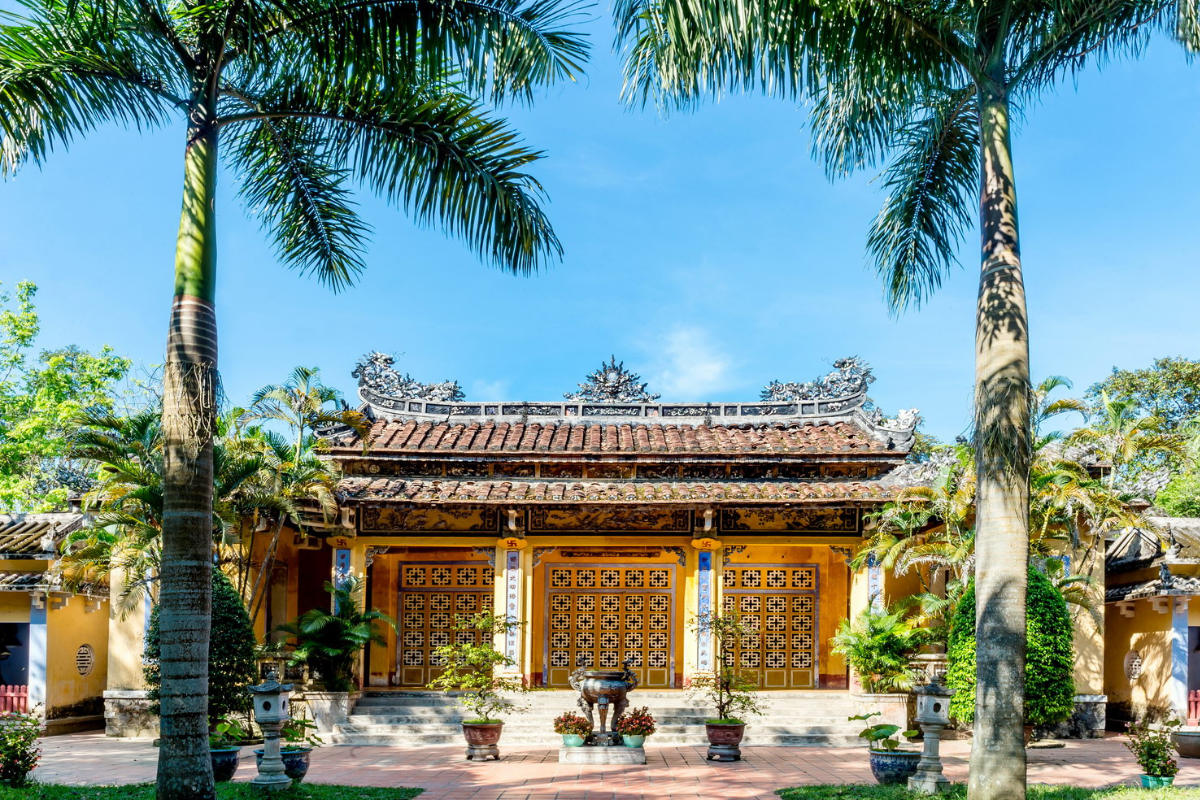
Named after the “Four Noble Truths” of Buddhism, this small golden pagoda in the center of Hue has been the site of activism, protests, and political violence during the 1960s—the best-known case being in 1963, when civilian Buddhists confronted Diem’s army trying to protect the pagoda from being raided. Thirty people died and 200 were wounded in one night.
Today, the pagoda has become a symbol of freedom, visited not only by Buddhists but also by activists from around the world. Sitting right on the Dong Ba canal and surrounded by lush vegetation, the pagoda provides a peaceful escape from the heat and tourist crowds.
Four towers surround the temple and house bells, while the main hall contains a Gautama Buddha statue.
6. Hue Museum of Royal Fine Arts
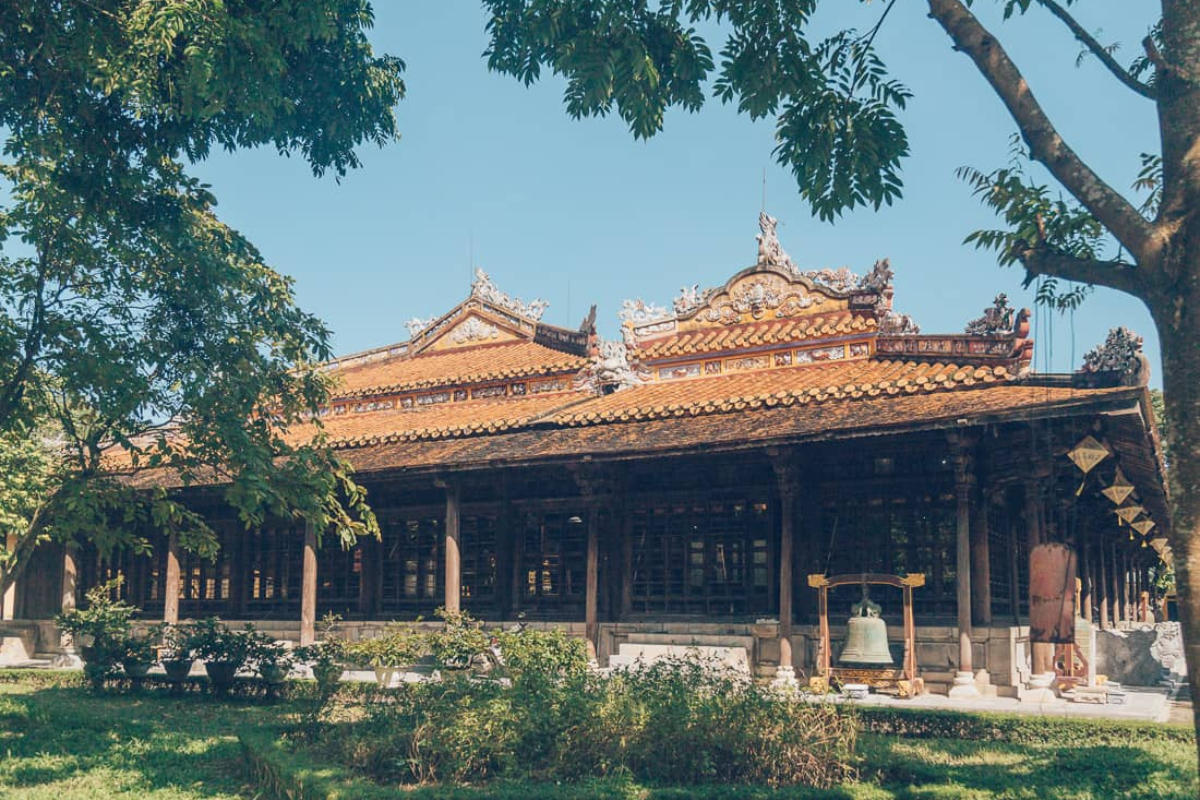
Housed inside the former Long An Palace, this museum offers a fascinating look into the culture and history of the city. The massive collection of over 10,000 objects includes everything from ceramics and silver objects to personal belongings and royal clothing of former Vietnam Emperors, furniture, Phap Lam enameled metal art, and numerous paintings and detailed murals.
All exhibits are labeled in English, and many include background details to help visitors better understand the history behind them and who used them.
While photography inside the museum is not allowed, this one-story wooden palace and the beautiful gardens around it provide plenty of picture-worthy corners waiting to be discovered.
7. Hope Center
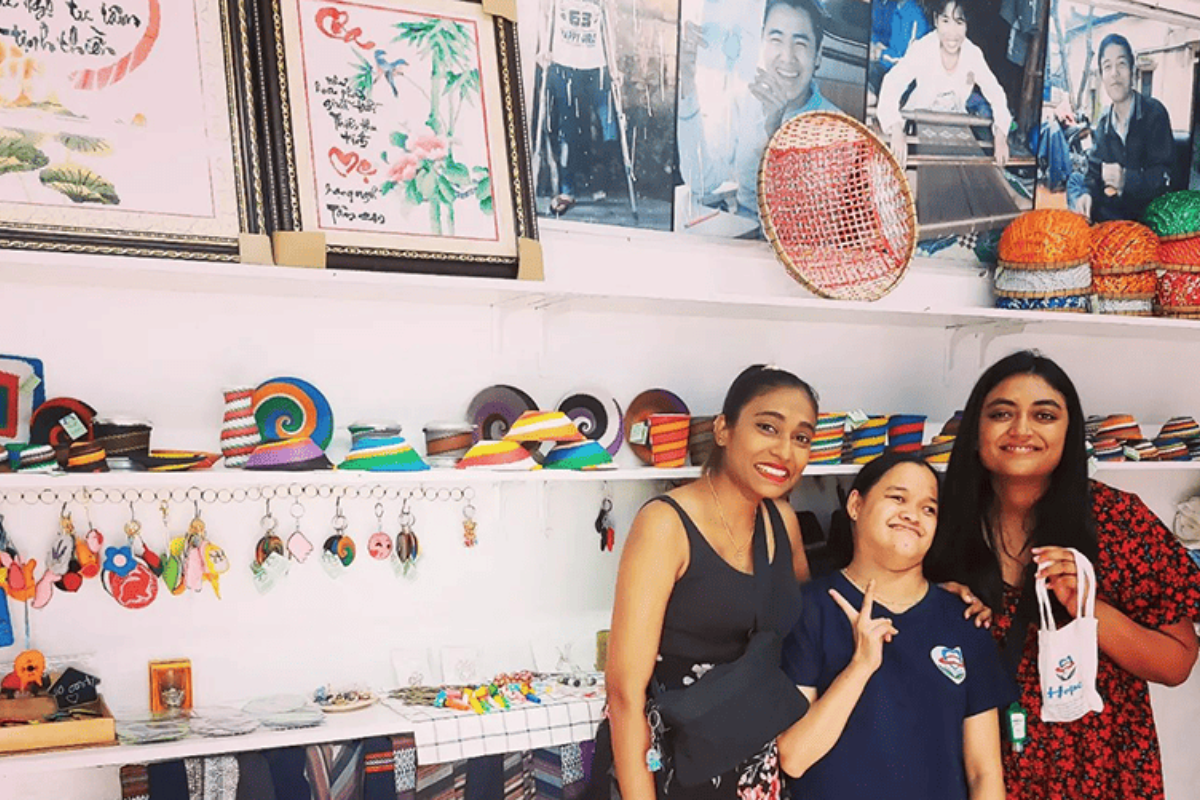
The Hope Center was created to help disabled and disadvantaged people, as well as ethnic minorities in Hue, by offering them a chance to learn to sew. The center produces uniforms for schools and hospitals, as well as a variety of handicrafts, including basket making, textile weaving, and handmade jewelry and bowls.
Most textile items are produced using A Luoi fabric, dyed and crafted by the Ta Oi ethnic group.
Visitors can see weaving and other work being done on-site and buy items to take home. It’s also possible to practice shaping and firing your own pottery or making handmade, recycled products to keep as souvenirs.
All classes, tours, and events are organized and guided by the people who work at the center, giving you a chance to interact with them and learn how the place is changing their lives.
8. The To Mieu Shrine
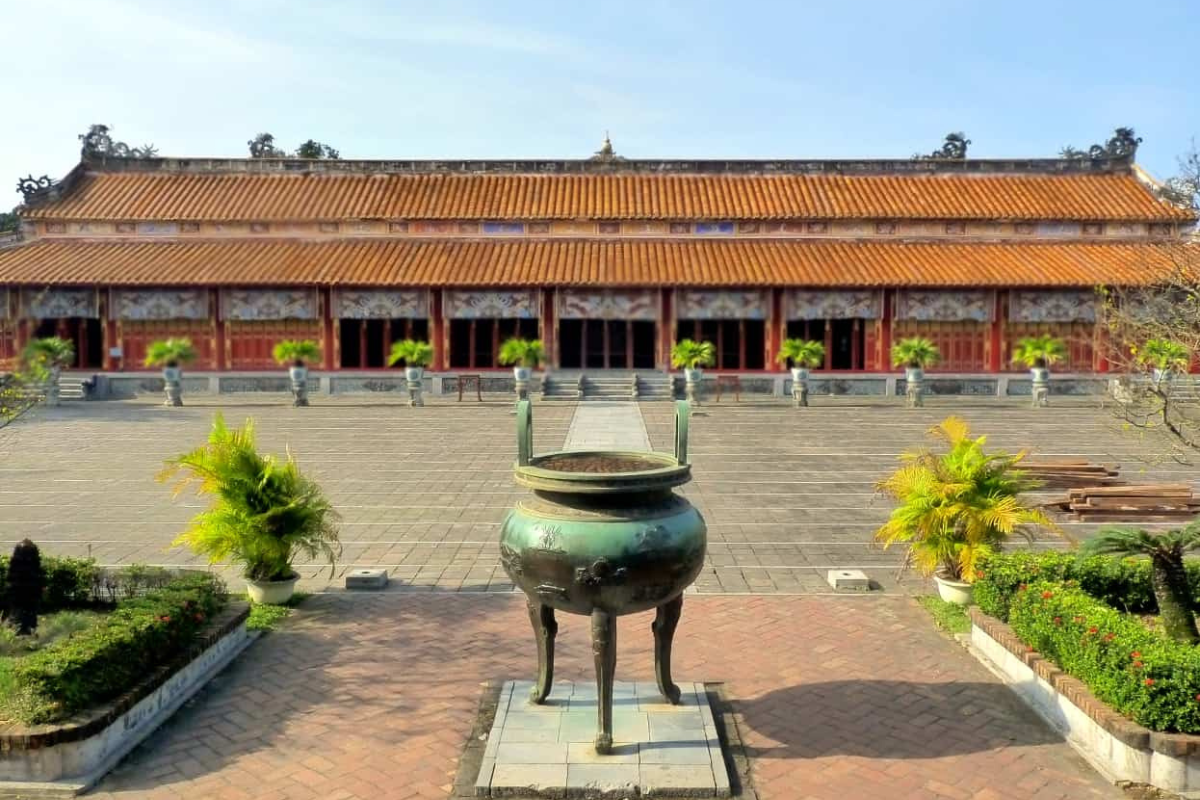
Modeled after the Imperial Ancestral Temple in China’s Forbidden City, the To Mieu temple was built for ancestor worship of past emperors. Although no actual remains of the emperors are buried here, there are nine urns representing nine Nguyen emperors.
Each emperor has his own altar, with photos of himself and the empress (or empresses for those with more than one wife), small offerings, and incense.
A massive stone gate, sweeping grounds, and lots of solitude make this temple a favorite sightseeing destination for those exploring Hue. Only a quarter of the original structures survived the Vietnam War, and very little restoration work has been done, so the place serves as a quiet reminder of difficult times while allowing you to admire the grandeur of the remaining temple.
9. Thanh Toan Bridge
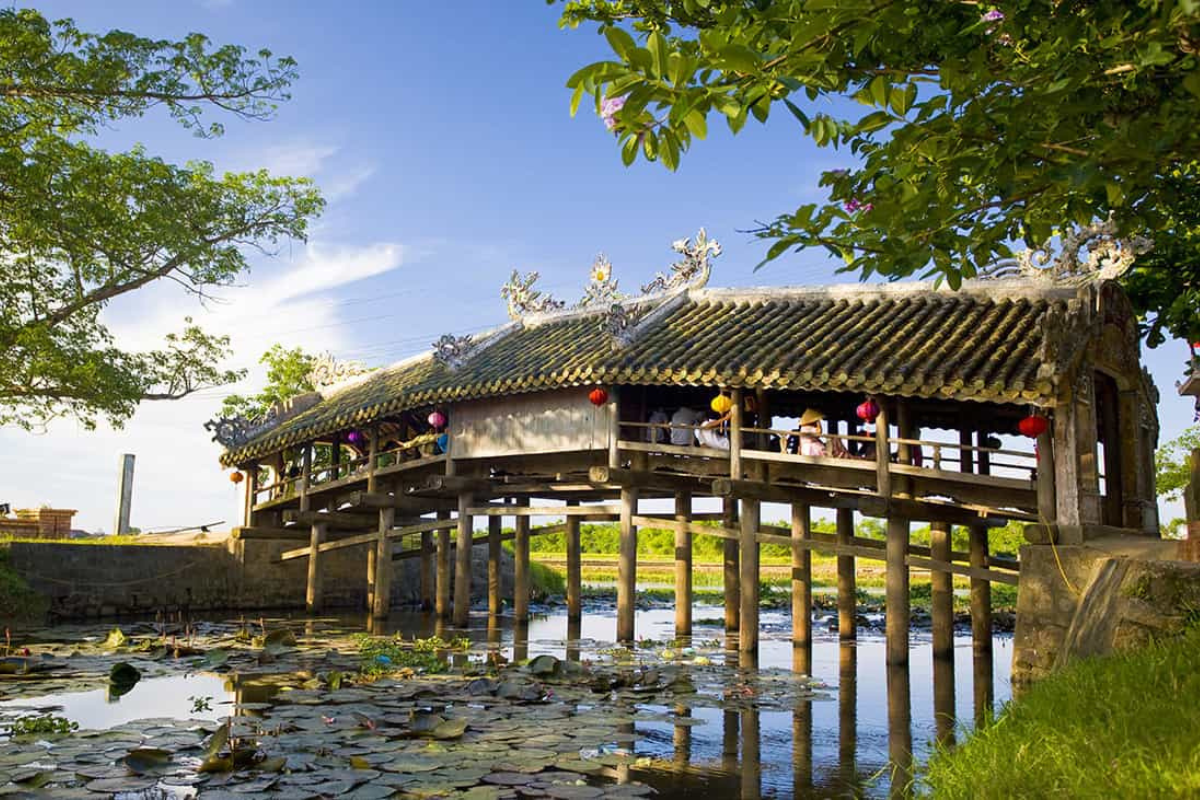
This wooden, 18th-century, tile-roofed footbridge is located around seven kilometers outside Hue. The Japanese-style bridge was built over a small river, allowing locals to cross without a boat and providing an escape from the heat for rural workers.
Inside the bridge, a small altar is dedicated to the memory of Tran Thi Dao, the wealthy widow who originally funded its construction.
While the bridge itself is interesting, the trip to the sleepy village of Thuy Thanh, where the bridge is located, is just as special. The ride to the village takes visitors through rice paddies, temples, and examples of local life.
Once at the village, you can see the beautiful columns of the city gate or hop on a boat to ride under the bridge and experience the river from a different perspective.
The local Farming Museum, where you can see ancient farming tools used to cultivate rice and learn how they impacted local life, is another great stop before heading back to Hue.
10. Dong Ba Market
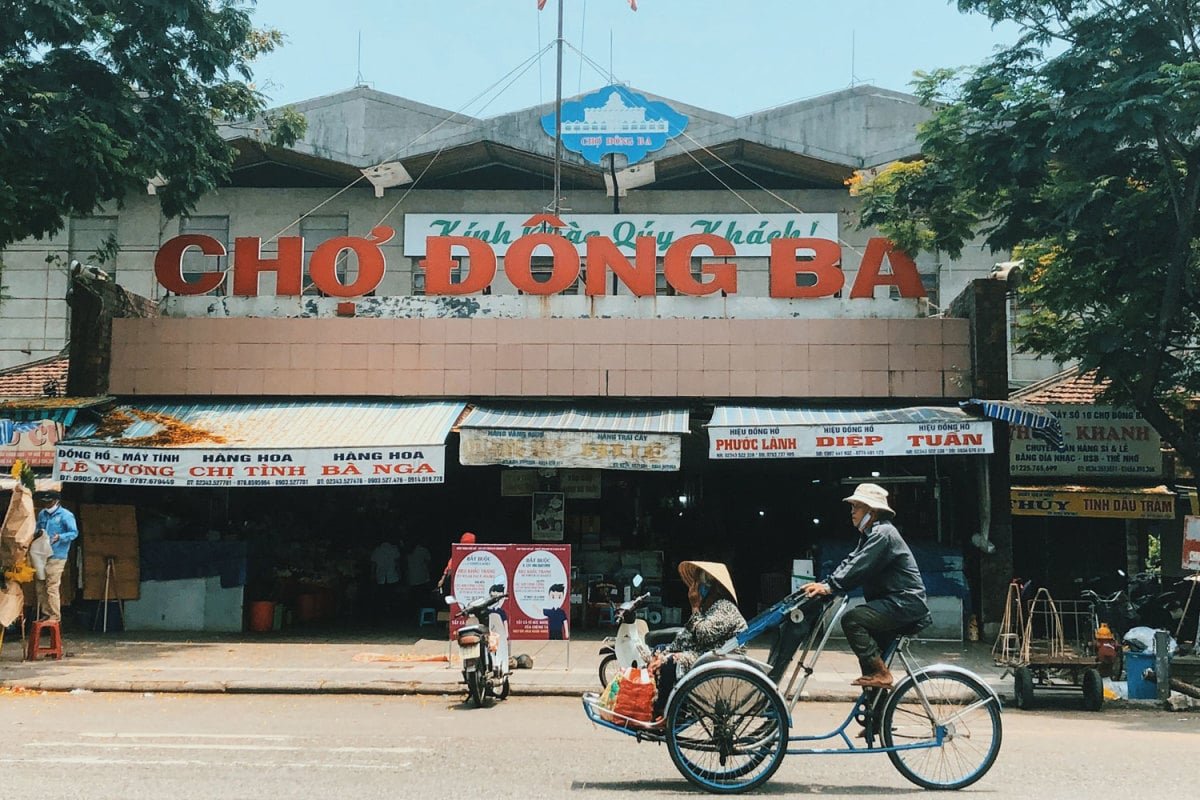
Outdoor markets are a staple of Vietnamese culture, and the Dong Ba market in Hue is no exception. The oldest and largest market in the city, Dong Ba covers 16,000 square meters of chaotic space, where stalls selling fresh vegetables sit next to those offering handicrafts and souvenirs.
The market opens very early in the morning (3am) to cater to locals shopping for fresh seafood and other foods, but you can arrive during the day or afternoon to pick up mementos to take home.
If you’re after clothes or wearable souvenirs, the market has an entire second floor dedicated to textiles, including many examples of non la bai tho (the typical conical leaf hat worn in Vietnam).
Other great Vietnamese souvenirs you can find here include lacquerware items, bamboo products, and guoc moc, a type of simple clogs made of bamboo or wood.
11. An Hien Garden House
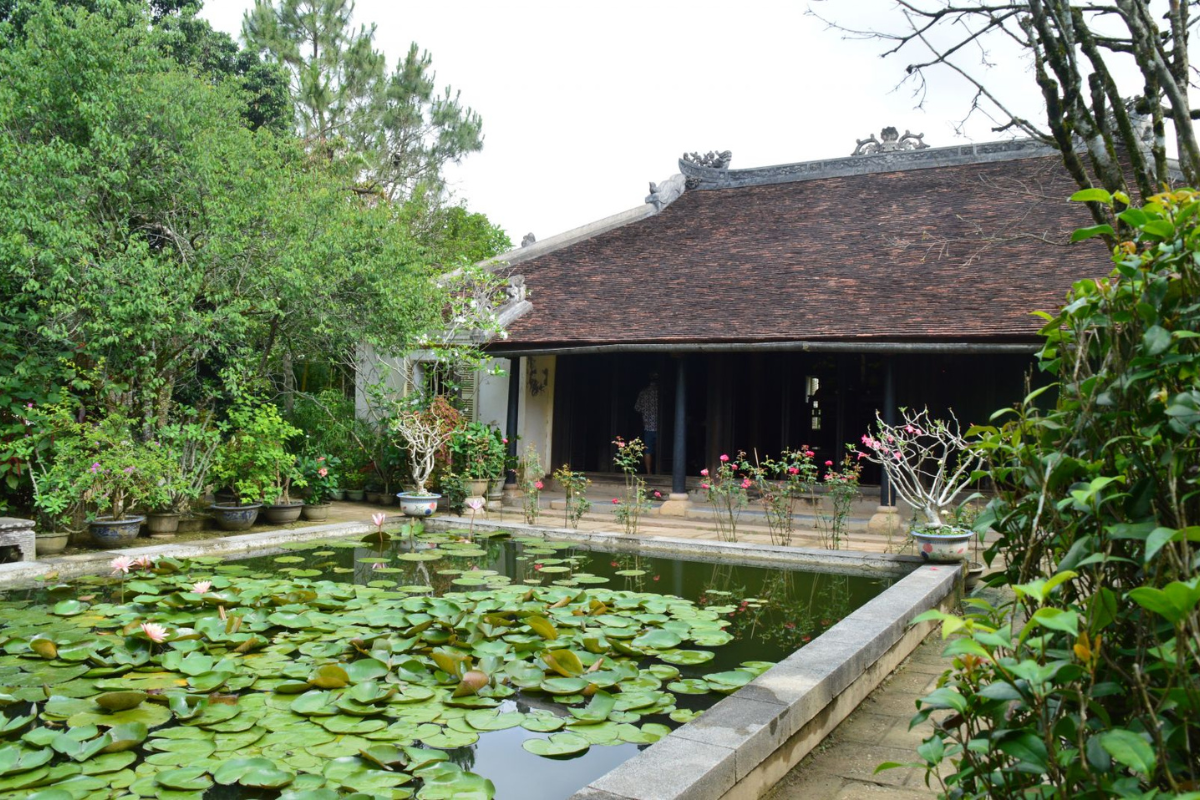
Garden houses are a unique architectural feature found in Hue. They usually consist of small wooden houses, sometimes on stilts, surrounded by ponds and lush gardens. These houses are particularly common on the banks of the Perfume River, where they enjoy both fresh air and quiet surroundings.
An Hien (House of Peace) is Hue’s most famous garden house. Over the decades, it has served as both a private home and the official residence of the governor of Ha Tinh province.
The entire design of the building is based on yin/yang principles: the screen on the main door drives away evil energy, while the water in the pool ensures harmony.
The house can only be reached after crossing a stone gate and walking down a 34-meter-long road surrounded by trees. Inside the 19th-century home, much of the original furniture, timber columns, and ancestor altars remain as they were over 100 years ago.
12. Royal Theater
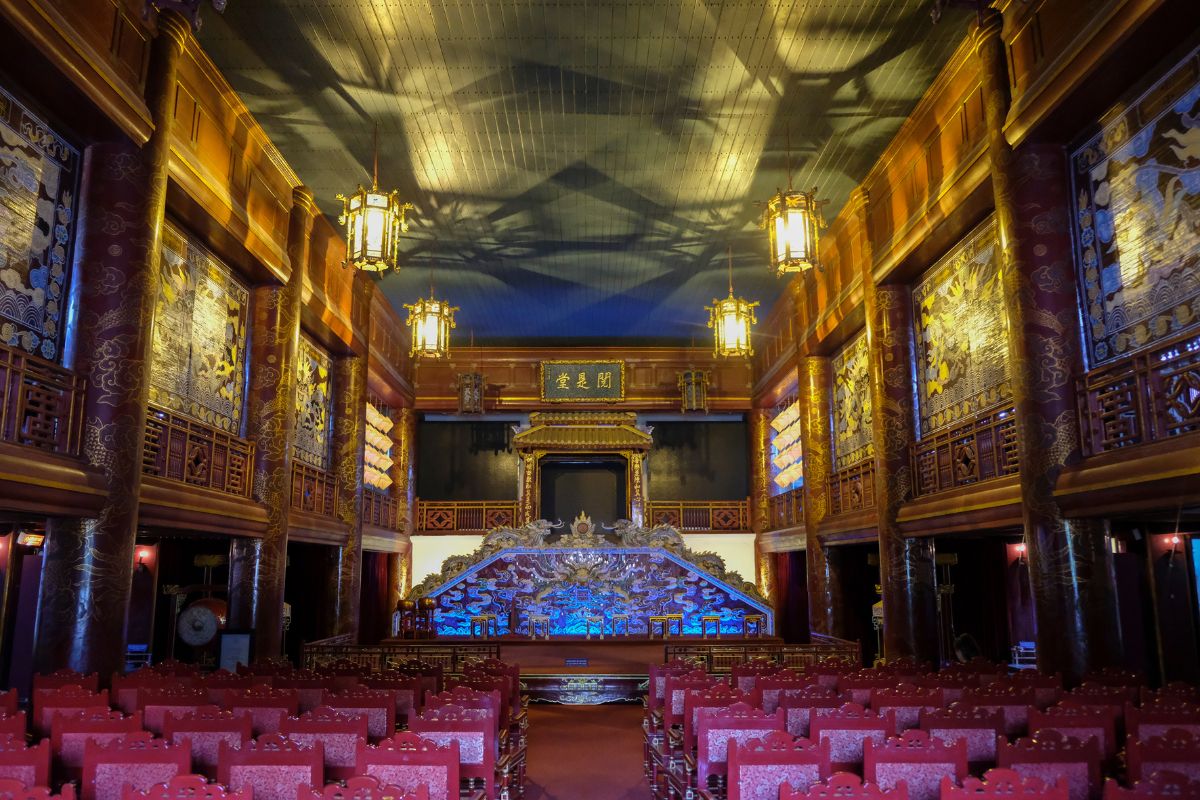
The beautiful red and golden Duyet Thi Duong Royal Theater was built in 1826 exclusively for the royal family to enjoy traditional art performances in an elegant, regal setting. Only the emperor and those close to him ever saw the inside, though banquets and performances were sometimes held for special guests visiting the court.
After extensive reconstruction, the theater finally opened to the public in 2004.
As the oldest still-operating theater in Vietnam, this is the perfect spot to catch a performance of Nha Nhac-Royal Music. When there are no performances, the theater is open to visitors who want to explore the displays of theater masks and traditional musical instruments. You can even sit on the plush red chairs and get up close to the stage.
13. Alba Thanh Tan Hot Springs
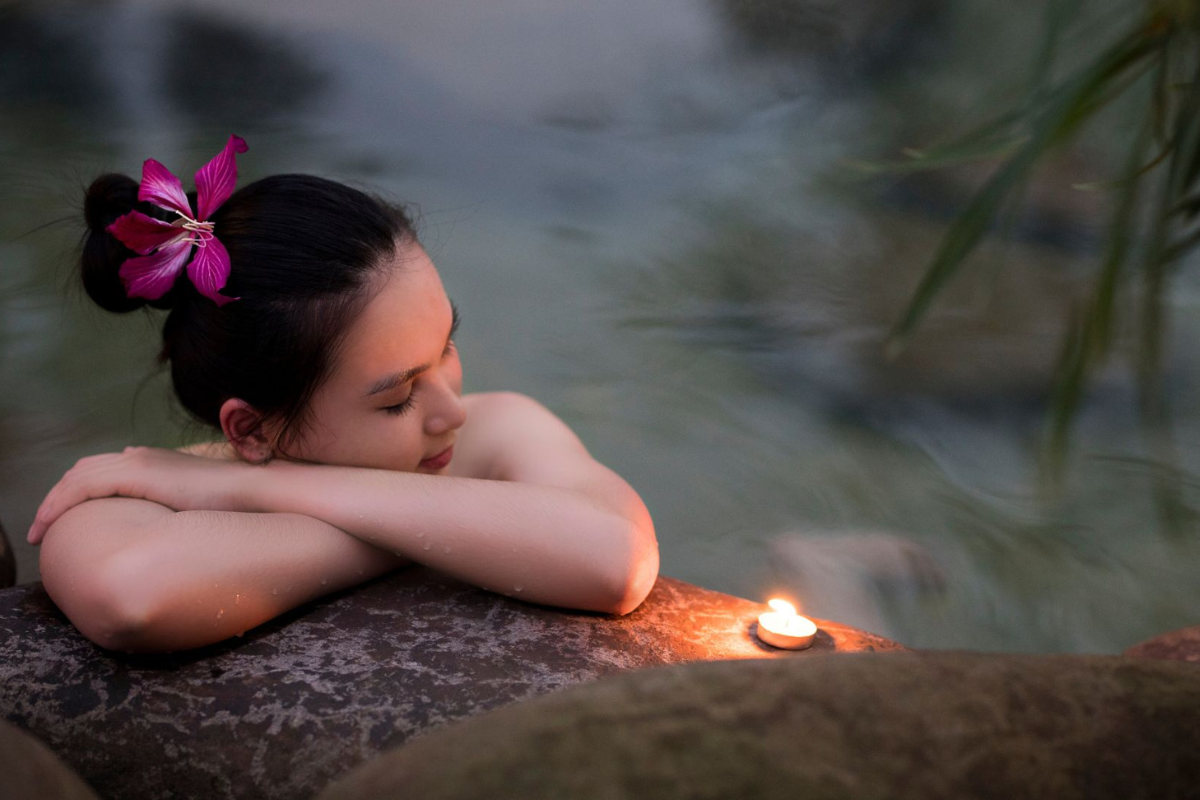
About 30 kilometers outside the city of Hue, these popular hot springs are a great way to relax and unwind. Although technically part of a resort that also includes accommodations and other attractions, it’s possible to visit just for the day to enjoy the hot springs. Even better, there’s a free resort shuttle bus that goes from the city to the hot springs, making it easier to transfer back and forth.
The springs have a natural temperature of 68 degrees Celsius at the source, but this is controlled through a series of streams and natural pools until they achieve the perfect temperature. You can soak in all the physical and mental benefits of the mineral-rich waters while relaxing under the whispering trees.
For those wanting to stay longer, there’s also a 560-meter-long zipline through the lush rainforest and an adventure rope course to test your balance. Stick around for a quiet meal overlooking the ponds at the end of the day.
Hue Travel Weather by Months: Your Ultimate Guide to Climate and Activities
- January in Hue: Discover Weather Highlights and Essential Travel Tips
- February in Hue: Explore the Climate and Must-Do Activities for a Memorable Visit
- March in Hue: Climate Insights and Exciting Activities to Enjoy
- April in Hue: Weather Insights and Top Activities for Adventurers
- May in Hue: Climate Insights and Must-Do Activities for Every Traveler
- June in Hue: The Perfect Season for a Scenic River Cruise Experience
- July in Hue: Weather Insights and Top Travel Recommendations
- August in Hue: Weather Highlights and Top Activities for Visitors
- September in Hue: Weather Update and Exciting Activities Await
- October in Hue: What to Expect from Weather and Top Activities
- November in Hue: Climate Overview and Must-Explore Activities
- December in Hue: Embrace Tranquility and Rich Culture This Winter
